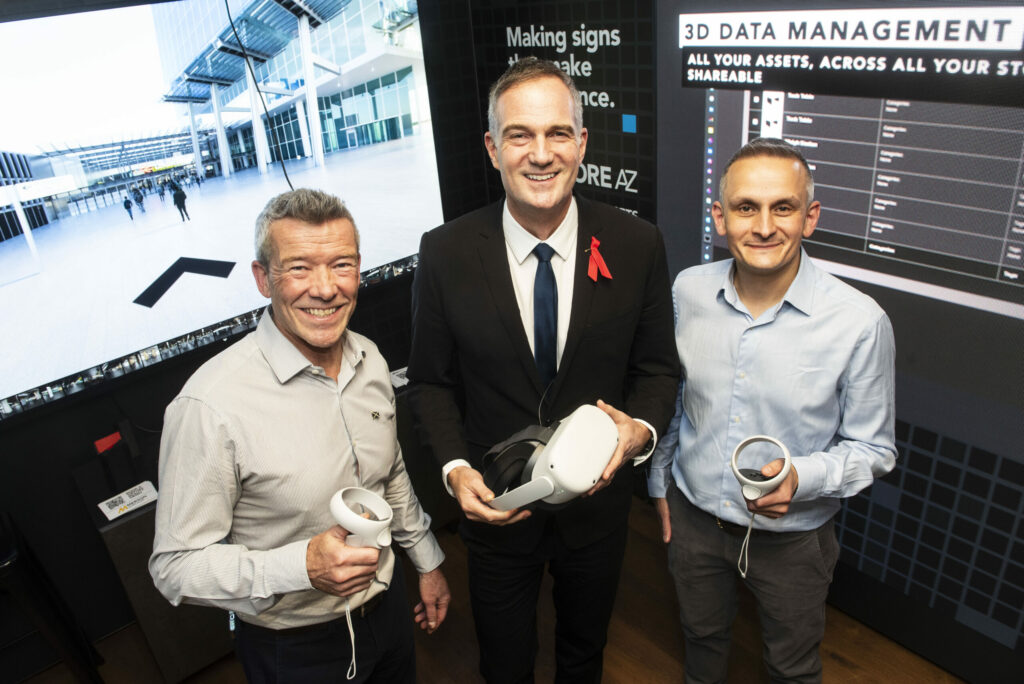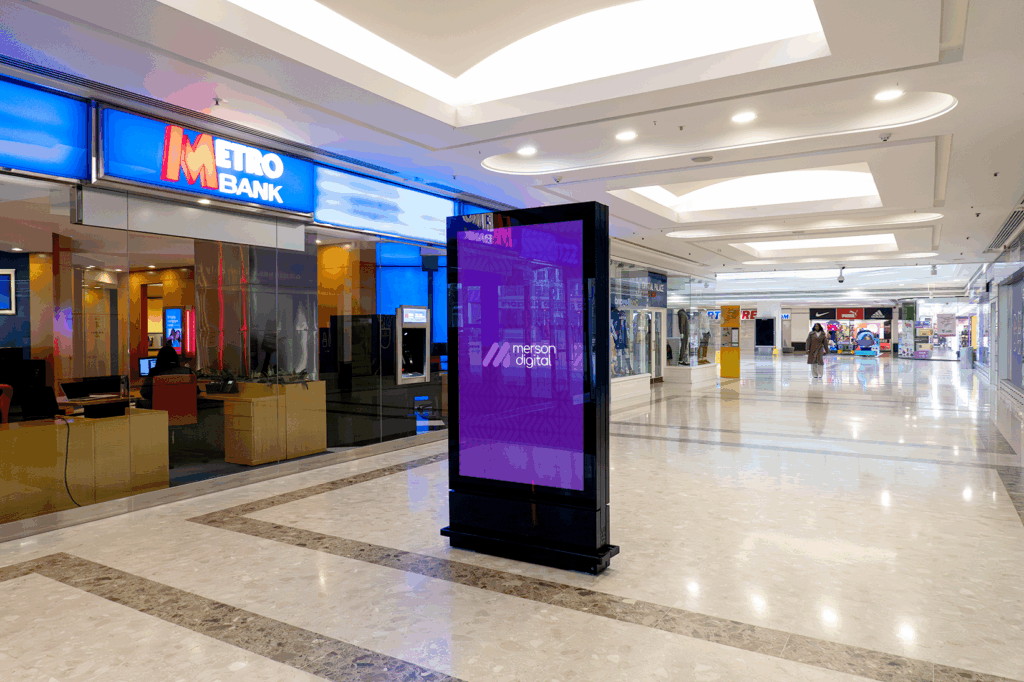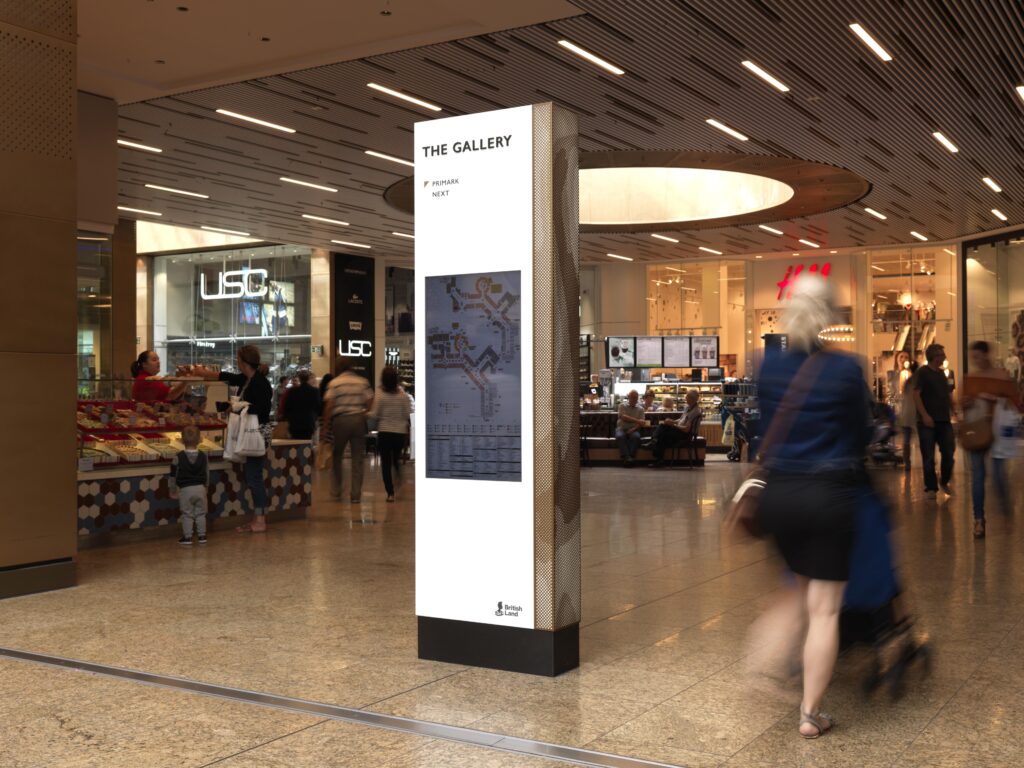
By Georgia Evans
The Evolution of Digital Signage in Public Spaces
Signage…take a 5 minute walk from where you are now, in any direction, and you’re sure to come across it. It has become an everyday part of life for almost everyone.
It could be signs at the side of the road, the display in a shop window, or wayfinding guidance in public spaces – the spread and reach of signage is clear to see.
More recently, signage has encompassed and become dominated by digital signage – a term used to describe the use of digital screens to display information or content in public spaces.
Signage and digital signage are synonymous with public spaces, but has it always been like that?
In this Merson Digital blog, we explore the evolution and history of digital signage, right back to its roots in Ancient Greek culture. We’ll assess the technological advancements that have shaped the digital signage market of today, as well as take a look at what the future for the industry might bring…
The History of Digital Signage
History suggests that signage, in one form or another, has been around for a incredibly long time.
The word ‘sign’ itself can draw its roots from the Latin word signum – which means an ‘identifying mark, token, indication or symbol’.
Not only the Ancient Greeks, but also the Egyptians and Romans, frequently used signage and signboards for the fronts of their shops, as well as a means to announce that public events were happening. Whilst their Terracotta signs are a long way away from what you might consider signage nowadays, they were effective in guiding the public and informing them on their surroundings.
As for digital signage, there have been a number of key technological advancements throughout the years that have paved the way for the cutting-edge screens we see dotted around today…
Technological Advancements Through The Years
Billboards
1835 saw the first billboard advertisements in New york – to advertise the Barnum & Bailey Circus, and by 1867 there were the first recorded incidents of people leasing space for billboards.
Neon Signs
First seen at the Paris motorshow in 1910 – Neon signs were most popular worldwide as a means of signage from the 1920’s through to the 1950’s, due to their brightness and attention drawing aesthetic. They’re still used today, however their popularity has waned in favour of more modern forms of signage.
LED Screens & Digital Signage
The invention of LED and LCD in 1962 and 1964, mark perhaps the most important advancements for the signage that we see today. These ushered in new possibilities for dynamic display capabilities. The first digital signage systems were seen in the 1980’s off the back of this
Digital Signage Media Players
With the advancement of media players, signage instantly became more advanced and able to deliver more dynamic content, which could be easily updated. It allowed retailers to replace DVDs and VHS with computer-driven players that could be controlled centrally.
Interactive screens
Smart displays have made user engagement more exciting by adding touchscreens and interactive features. With touch interaction, users can actively participate with the signage and content, creating a dynamic and personalised experience
How Does Digital Signage Benefit User Experience Today?
The answer to this question really depends upon the application that digital signage is deployed in…
Digital signage significantly improves user experience in public spaces like stadiums, airports, and roadsides. These displays provide real-time information and guidance, enhancing the overall atmosphere and functionality of these areas.
In stadiums, they can offer live updates on scores and events, enriching the spectator experience.
Airports regularly use them to streamline travel, with updates on check-ins, gate changes, and flight statuses, reducing traveler stress.
On roadsides, they can provide vital traffic information, promoting safer and more efficient travel.
Overall, digital signage makes public spaces more user-friendly by delivering timely and accessible updates and information.
Future Trends
The future of digital signage looks set to embrace exciting trends that will transform how the user interacts with information.
Augmented reality (AR) and virtual reality (VR) are likely play a big role, making signs more interactive and immersive. For example, Imagine pointing your phone at a sign and seeing additional information or a 3D model pop up to aid you even further,
Sustainability is also becoming a major focus, with new signs likely to be designed to be more energy-efficient, using energy saving measures and made from eco-friendly materials.
Finally, advances in interactivity could include touchless interfaces and voice commands, making it easier and more intuitive for people to engage with signage content.
These trends will make digital signage smarter, greener, and more engaging in the years to come.












